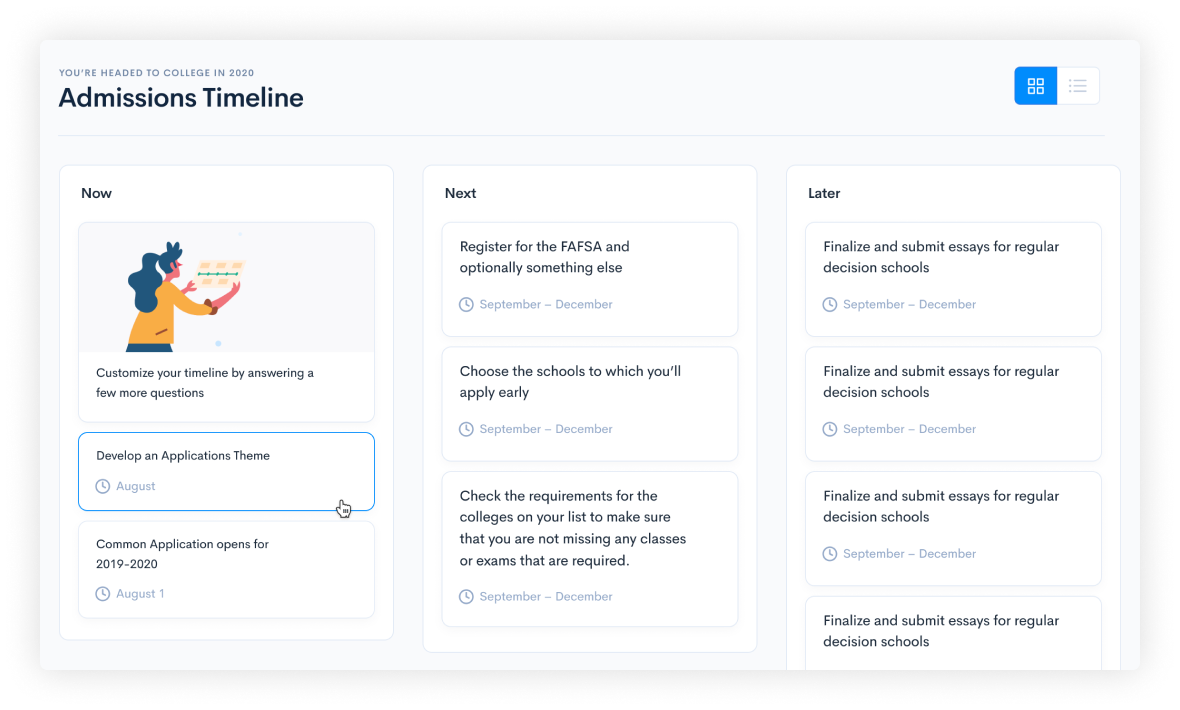
How to understand your PSAT score
It’s important to understand what your PSAT score means and your next steps.

It’s important to understand what your PSAT score means and your next steps.
The PSAT (Preliminary SAT) can be taken starting in 8th grade and tests reasoning skills and emphasizes the knowledge and application of these skills. The test focuses on the subject areas of evidence-based reading, writing and language, and math.
The PSAT 8/9 is for students in 8th or 9th grade and evaluates what skills students need to work on most in reading, writing and language, and math. The PSAT 8/9 has fewer questions than the PSAT 10 and PSAT NMSQT and is not a great indicator of future SAT scores, although it can be good practice for the PSAT 10 or PSAT NMSQT. Schools decide when to administer the test, so test dates vary throughout the year.
The PSAT 10 is taken in 10th grade and is identical to the PSAT NMSQT. This test can provide insight into what subject areas should be improved and is an effective PSAT practice test if you’re trying to qualify for a National Merit Scholarship as a Junior. The PSAT 10 is offered in the spring.
This test, taken by 11th graders, serves as the qualifying test for the National Merit Scholarship Program. The top 1% of 11th-grade PSAT takers become semi-finalists, and of these, 7,500 go on to win scholarship money. Sometimes, the PSAT NMSQT can also be an application requirement for competitive summer programs. This test is taken in the fall, usually in October.
The PSAT 8/9 is scored on a scale of 240-1440, with 1440 being the highest score. The PSAT 10 and PSAT NMSQT are scored on a scale of 320-1520, with 1520 being the highest score.
The total score is a sum of the two section scores, Evidence-Based Reading and Writing and Math. The section scores are scored on a range of 160 to 760.
The percentile compares you to everyone else who took the PSAT on that same test date. You’ll also receive test scores and subscores that show how you’re performing relative to students who are meeting or exceeding the benchmark.
Your PSAT score matters because it can provide insight into what subject areas need to be improved and can qualify you for a National Merit Scholarship your junior year.
The PSAT can also get you used to a standardized testing environment, however it’s not the best indicator of your SAT score. It’s shorter in length, so it’s not an accurate way to measure stamina and pacing, lacks an essay question, and historically tests easier questions.

The PSAT score report doesn’t provide actionable metrics, which means you're missing out on the possibility of a large score increase on the SAT. Without a proper breakdown of your score, chances are you'll waste time studying things you don't need to or focusing on the wrong areas.
It's important to know:

Sign up for CollegeVine and get a personalized timeline, letting you know when you should be thinking about standardized tests.
